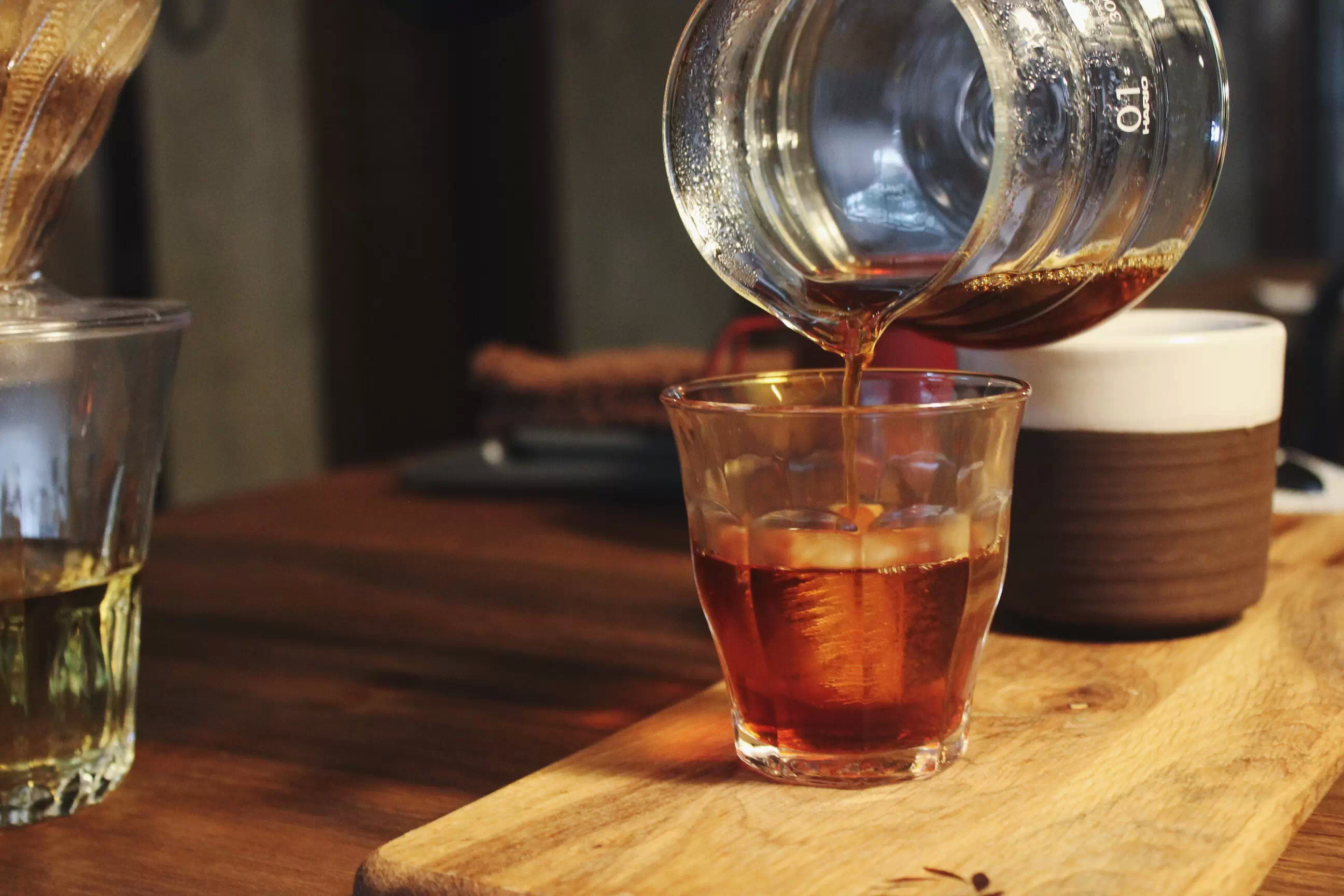An introduction to Coffee Culture in the World of Cafe Culture

People who love coffee shops and drink coffee mostly fall in love with this drink because of the impact of coffee on the human body and mind. Coffee stimulates the sympathetic nerves. It stimulates us to think, talk, read, write or work.
Muslims are the first coffee drinkers in the world. They call coffee "the nectar of the sun god". Because coffee can promote people to think, dream and debate, they say: "Coffee is the spiritual food for thinkers and chess masters." At that time, they responded to the defamation of coffee drinks by Christians and pagans.
As a drink, coffee is first popular in North Africa and the east coast of the Mediterranean. Whether in the cafes of Mecca or today, consumers prefer to read and chat rather than dance, play chess rather than gamble, and listen to music rather than sing quietly.
Cafes are generally open on the street or in the open air, unlike bars, which are always surrounded by darkness and far away from the rational world. Coffee drinkers don't need an underground shelter, but a comfortable corner where they can read newspapers and talk.
Cafes are often closely related to work and informal study. Even in the most humble cafes, consumers immersed in reading are still a common sight. The Turks call their cafe "schools of the wise". In fact, throughout the 18th and 19th centuries, with the exception of romantic painters such as open-air impressionists who were not often in cafes, intellectuals in Europe or the United States spent the best time of the day in cafes. Enlightenment brought not only a new worldview to Europe, but also coffee and tea to Europe. It is always much easier to promote innovative ideas after coffee in the morning than after a typical old-fashioned beer and herring breakfast.
Cafe Culture-France
In many French films, we can see such scenes: cafes and open-air cafes, large and small, dotted the streets of France, during which the French are leisurely drinking coffee and chatting. Read books or watch pedestrians come and go.
In France, cafes have become a kind of public space full of political and cultural significance, and French cafes have even become a common place for many American and European literati to escape from the cruel life after World War I.
Cafes first appeared in France in 1672. In the first five years of the 20th century, Hemingway, Sartre and other celebrities portrayed the cafe as a social center, a debate club and a good place to forget the stresses of modern life. Before the first World War, the number of French cafes reached more than 500,000.
French cafes can not only meet people's food needs, but also sell books, newspapers, magazines, cigarettes and all kinds of lottery tickets, including public telephones. For those who go to the cafe, some just want to have a cup of coffee, find a place to sit, or read free newspapers and periodicals; others find like-minded friends to talk about things; there are also many young people who take advantage of the opportunity to drink coffee for business or other content negotiations and exchanges; there are also many young people who hide in a corner of the cafe and make love. Some people can't find a toilet in the street, and they often run into the bathroom of the cafe for "convenience" and have no choice but to buy a cup of coffee so that the boss won't be unhappy. It doesn't matter if you don't buy coffee, the boss won't shut you out. Most of the waiters in cafes are polite and patient with customers, who can sit as long as they want. They have never heard of anyone being driven away.
However, it is uneasy to note that, like French wine culture, French cafe culture is in decline. Since the 1970s, 4000 cafes have gone bankrupt in France every year. By 1980, there were only 80,000 cafes left in France, and now there are even fewer. In a survey conducted by Perrier Mineral Water, nearly 1/3 of French people said they had never been in a cafe. The main reason is that great changes have taken place in French eating habits. They increasingly prefer to eat fast food instead of drinking coffee or just staying at home to eat. Another reason is that people are living at a faster pace and don't have so much time to chat in cafes. Even so, the surviving cafes are not empty, with 10 million French saying they go to at least one cafe a week for coffee, and countless foreigners come.
Coffee shop culture-UK
The first coffee shop in England was opened in 1651 by a Jew named Jacob at Oxford. But the author of "the Cultural History of the Cafe" says that Jacob's coffee shop was only written in a recall article in 1671, but there is no definite evidence. In London, cafes existed at least in 1654. The author deduces that the London cafe should have appeared around 1652.
The man who brought the coffee to London was a businessman. When he was doing business in Turkey, he became infatuated with coffee. He was surrounded by a Greek servant who made coffee for him. When he returned to London, he took the Greek coffee maker back to London. First we entertain guests at family gatherings, and then we open a coffee shop.
Cafes became a place of concentration for businessmen, especially those engaged in overseas trade, and then developed into politicians. Before and after the Glorious Revolution in England, these businessmen engaged in overseas trade were generally close to Parliament, so the cafe became a symbol of the revolution. There are often some radical remarks spread here. In England in the 17th century, cafes were called "penny universities". At that time, you only had to pay a penny to enter the cafe; the cost of coffee was 2p, including newspapers. People can attend irregular forums and may meet celebrities like Joseph Addison and Sir Richard Steele.
In addition, a cup of coffee of 6p is not expensive and everyone can afford it, so unlike previous places of communication, such as palaces or gardens, cafes are not a symbol of status and status. Cafes have become a place for social exchange on an equal footing. If you want to know someone, if you want to get more business information, if you want to know more radical ideas, then you go to the cafe, which is like the Internet today. it became part of British social, cultural and political life at that time.
Cafe Culture-Vienna
The Vienna Cafe is not the kind of ordinary coffee shop that only serves coffee for people to drink. They are more like a kind of public institution in Vienna, like Stephen Cathedral, the Ferris wheel and Libizama, becoming part of Vienna. The coffee culture tradition in Vienna can be traced back to more than 300 years ago.
In 1683, the Turks were defeated and retreated in a hurry during the siege of Vienna, leaving behind some raw coffee beans that were still completely unknown in Vienna at that time. A clever businessman bought all the coffee beans and soon opened the first coffee shop in Vienna.
In fact, in the 21st century, Viennese love and value coffee and cafes as much as tourists from all over the world, where they can get together with friends, have breakfast or just leisurely read newspapers. The most important part of the Vienna Cafe is the shelf selection of daily newspapers and pictorials. A famous Austrian writer once said, "it can be said that the cafe is our home."
"accessory"
Newspaper table
The newspaper table is an indispensable part of the whole cafe. Spending a few silver coins (buying a cup of coffee) to sit in a cafe and read the world's news used to be a luxury, which inevitably made the Vienna Cafe a meeting place for intellectuals and artists at that time. The famous Central Cafe in Vienna even kept a pamphlet listing all 200 newspapers that could be read in the cafe.
Waiter
Neither the architectural style nor the drink is as impressive as a waiter in a cafe. No matter how unreasonable demands and opinions they are faced with, their humility, courtesy and breeding will make every guest happy. Some waiters come from well-known areas far from Vienna. As their duties, these waiters are not tired of delivering food and drinks, because former waiters are sometimes even required to remember exactly the ranks of guests from military and political circles.
A glass of water
A cup of water before serving coffee is a necessary procedure in a Viennese cafe. Today, people drink a cup of water before drinking coffee first in order to avoid dehydration when drinking coffee, so as to get a better taste. In the past, serving this glass of water had a special function, because as soon as the guest had finished drinking the water, the waiter would fill it up for him, and then the guest could tell the waiter if he needed anything else.
Coffee
In the early days of the Viennese Caf é, the Viennese made coffee strictly in the Arab way: strong, black and unsweetened. Viennese coffee didn't really find a breakthrough until someone tried to sweeten it by adding milk and honey to it. Viennese obviously prefer sweeter coffee. These watered-down, processed coffee have been a great success. Now, you have to say what kind of coffee to order a cup of coffee in Vienna. Over time, the original coffee spawned a variety of new varieties and flavors.
Important Notice :
前街咖啡 FrontStreet Coffee has moved to new addredd:
FrontStreet Coffee Address: 315,Donghua East Road,GuangZhou
Tel:020 38364473
- Prev

Coffee shop culture and Chinese crowdfunding coffee shop culture
I do not know when coffee came into Chinese life, coffee is no longer just a cup of drink in hand, it has become a cultural and social carrier. Asking for a cup of coffee or tea in a cafe and chatting with friends is the warmth of reunion after a long separation and the comfort of being busy. Others sit quietly in the cafe, watching the sunset, thinking or relaxing. There are a lot of people who will
- Next

The Origin of Cafe Culture basic knowledge of Cafe Culture
History itself is a cultural phenomenon, and the deposition of human culture is the product of human long-term history and social practice, which is both spiritual and material. Therefore, when we mention the term culture, it represents that rhyme is not only a common concept in the academic and ideological field, but also a daily term in social life. Everything created by human beings can be regarded as the content of culture.
Related
- How did the Salvadoran coffee industry develop in Central America?
- What exactly does the golden cup extraction of coffee mean?
- The Origin of Coffee flower
- [2023 Starbucks World Earth Day] there are more meaningful things besides free Starbucks coffee!
- What kind of coffee is there in Spain? 9 Flavors of Spanish Coffee
- Aromatic African coffee| Kenya's coffee culture and historical production area
- Liberica Coffee Bean knowledge: the characteristics of Liberian Coffee beans of the three original species of Coffee beans
- The origin and formula of Spanish latte introduces the taste characteristics of Bombon coffee in Valencia, Spain.
- How to adjust the solution of over-extracted coffee
- What is the tasting period of coffee beans? What is the period of coffee and beans? How should coffee wake up and raise beans?

